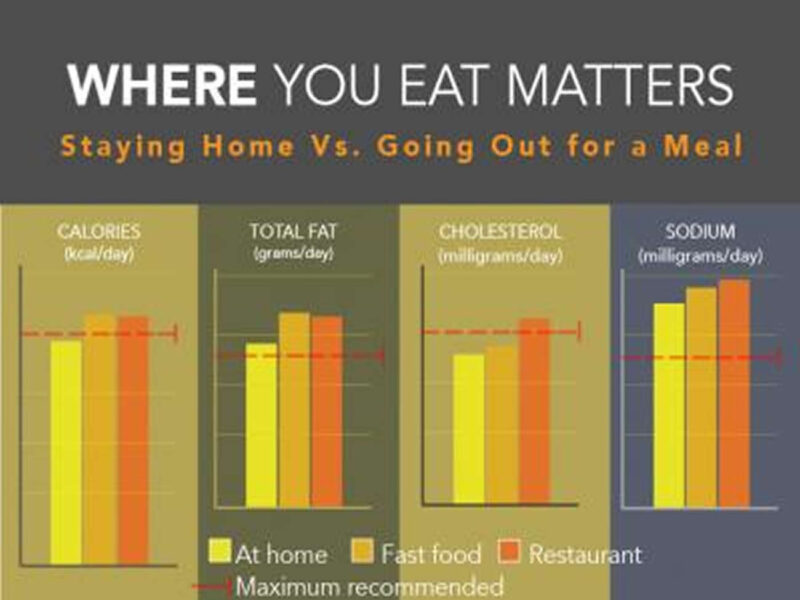When Americans go out to eat, either at a fast-food outlet or a full-service restaurant, they consume, on average, about 200 more calories a day than when they stay home for meals, a new study reports. They also take in more fat, saturated fat, cholesterol and sodium than those who prepare and eat their meals at home.
These are the findings of University of Illinois kinesiology and community health professor Ruopeng An, who analyzed eight years of nationally representative data from the National Health and Nutrition Examination Survey, which is conducted by the National Center for Health Statistics. An looked at 2003-10 data collected from 18,098 adults living in the U.S.
His analysis, reported in the European Journal of Clinical Nutrition, revealed that eating at a restaurant is comparable to – or in some cases less healthy than – eating at a fast-food outlet. While people who eat at restaurants tend to take in more healthy nutrients – including certain vitamins, potassium and omega-3 fatty acids – than those who eat at home or at a fast-food outlet, the restaurant diners also consume substantially more sodium and cholesterol – two nutrients that Americans generally eat in excess, even at home.
“People who ate at full-service restaurants consumed significantly more cholesterol per day than people who ate at home,” An said. “This extra intake of cholesterol, about 58 milligrams per day, accounts for 20 percent of the recommended upper bound of total cholesterol intake of 300 milligrams per day.”
Those who ate at fast-food outlets also took in extra cholesterol, but only about 10 milligrams more than those who ate at home.
Fast-food and restaurant diners consumed about 10 grams more total fat, and 3.49 grams and 2.46 grams, respectively, more saturated fat than those who dined at home.
“The American Heart Association recommends limiting the amount of saturated fats one eats to less than 5 to 6 percent of one’s total daily calories,” An said. “That means that if one needs about 2,000 calories a day, less than 120 calories, or 13 grams, should come from saturated fats.”
Eating at a fast-food outlet adds about 300 milligrams of sodium to one’s daily intake, and restaurant dining boosts sodium intake by 412 milligrams per day, on average, An said. Recommendations for sodium intake vary between 1,500 and 2,300 milligrams per day, but Americans already consume more than 3,100 milligrams of sodium at home, he found.
“The additional sodium is even more worrisome because the average daily sodium intake among Americans is already so far above the recommended upper limit, posing a significant public health concern, such as hypertension and heart disease,” he said.
An also found striking differences in the effects of dining out on different groups.
“African-Americans who ate at fast-food and full-service restaurants took in more total fat, saturated fat, sodium and sugar than their Caucasian and Hispanic counterparts who dined out,” An said. “The effect of fast-food restaurant consumption on daily total energy intake appeared larger among people with lower educational attainment,” An said. “And people in the middle-income range had the highest daily intake of total energy, total fat, saturated fat and sodium when they dined at full-service restaurants.”
The obese also consumed more calories at fast-food restaurants, and took in more total energy, total fat, saturated fat, cholesterol and sodium when eating at full-service restaurants than their normal-weight and overweight (but not obese) peers, An found.
“These findings reveal that eating at a full-service restaurant is not necessarily healthier than eating at a fast-food outlet,” An said. “In fact, you may be at higher risk of overeating in a full-service restaurant than when eating fast-food. My advice to those hoping to consume a healthy diet and not overeat is that it is healthier to prepare your own foods, and to avoid eating outside the home whenever possible.”
Source: University of Illinois at Urbana-Champaign
Journal: European Journal of Clinical Nutrition
Image credit: Diana Yates

